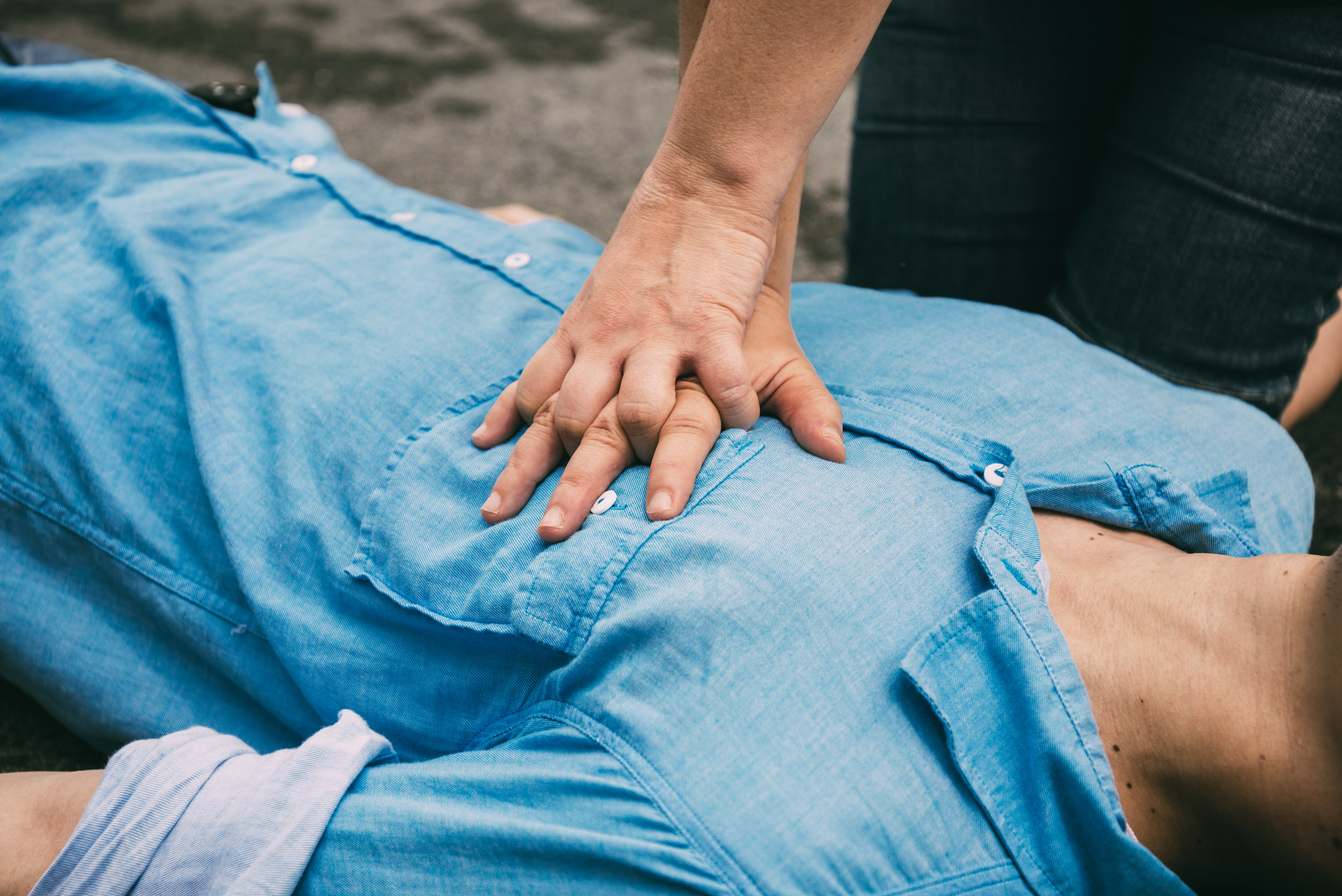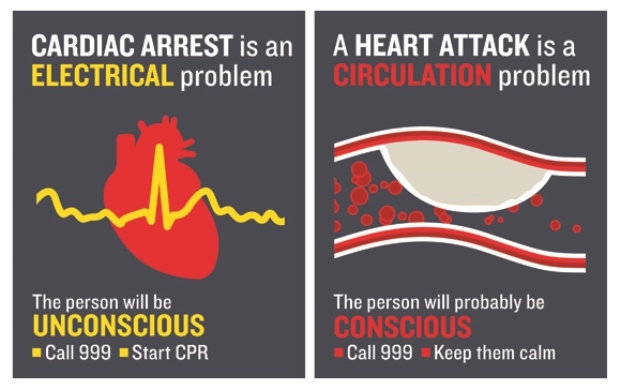
EVERY week in Scotland, 70 people will suffer a cardiac arrest. It could be at any time, and happens to all ages.
According to Ready Scotland, just 4 out of those 70 people will survive the incident.
Here’s how you can increase chances of survival if you witness someone suffering a cardiac arrest.
What is a Cardiac Arrest?
A cardiac arrest is an electrical problem that causes a person’s heart to stop beating normally.
When the heart stops pumping blood, the brain is starved of oxygen. This causes people to fall unconscious and stop breathing.
It is not the same as a heart attack, which is a circulatory problem, caused by a clot forming in an artery supplying blood to the heart muscle.
What to do if someone is suffering it
There are usually no symptoms before a cardiac arrest and, without immediate treatment, it will be fatal. If someone is in cardiac arrest, they will not be conscious, responsive, or breathing normally if at all.
Phone 999 immediately if you witness a cardiac arrest, and start giving CPR.
A life-saving skill, CPR can be learned on a first aid course or online, in guides such as this from the British Heart Foundation: https://www.bhf.org.uk/how-you-can-help/how-to-save-a-life/how-to-do-cpr
What is a defibrillator?
An additional tool for providing life-saving treatment in the event of cardiac arrest is the defibrillator.
The device gives a high energy electric shock – called defibrillation – to a person’s heart through their chest wall.
An Automated External Defibrillator (AED) analyses the heart rhythm of a person in cardiac arrest and may apply a shock to enable the patient’s heart to restart, or advise continuing with CPR.
An AED gives easy-to-follow guidance to the user, and will not apply a shock if it isn’t needed.
Bystander intervention buys time until emergency services arrive, but using an AED is just one element, alongside CPR and others, in helping to save lives.
A range of organisations, businesses, clubs, groups and communities across Scotland have already installed an AED.
Many make them publicly available and to the emergency services: such Public Access Defibrillators are key to strengthening community readiness to respond.
New project aims to ‘save thousands of lives’ by mapping the UK’s defibrillators
How to use a defibrillator
Defibrillators are made so that they are as easy as possible to use in life-threatening situations.
While units may differ, the British Heart Foundation say they all function in broadly the same way.
They’ve put together a short video that explains how they work.
The charity also gives a few pointers as to what to do when you find someone who is not breathing or having trouble doing so.
The first thing to do is call 999 and start CPR to keep the blood flowing.
Every minute without CPR or defibrillation reduces the chance of survival by 10%. Research shows that applying a controlled shock within five minutes of collapse provides the best possible chances of survival.
Keep CPR going – don’t stop it to go and get a defibrillator. If there’s someone else around, send them for it.
999 operators will be able to tell you if one is nearby.
If you have access to a defibrillator, follow the spoken instructions provided by the unit. There may also be diagrams or a screen to assist.
The device will detect the heart’s rhythm and will shock if required.
Follow the instructions and you may save a life.
Community defibrillators
The Scottish Ambulance Service is working with the British Heart Foundation and other charities to identify places where a community defibrillator could be valuable.
This could be remote communities, or busy areas where there are high numbers of people.
Once installed, training is provided to community members or staff and a local contact is nominated to undertake regular maintenance checks.
The Scottish Government is committed to improving the response to, and survival rates after, Out-of-Hospital Cardiac Arrest (OHCA).
They launched a strategy to become a world leader in response to OHCA by 2020, aiming to increase the survival rate by 10% within five years and to train 500,000 in CPR.

Enjoy the convenience of having The Sunday Post delivered as a digital ePaper straight to your smartphone, tablet or computer.
Subscribe for only £5.49 a month and enjoy all the benefits of the printed paper as a digital replica.
Subscribe